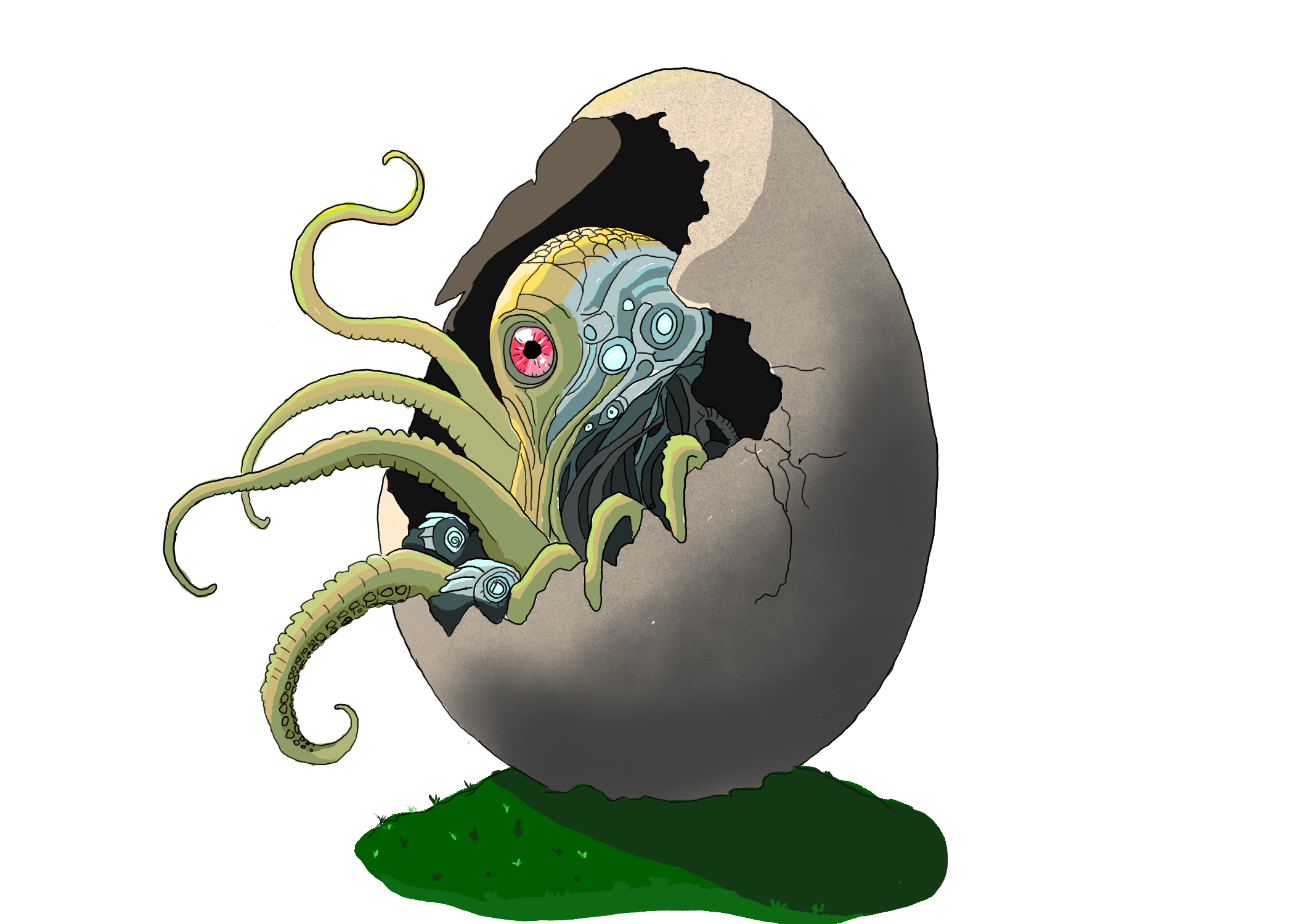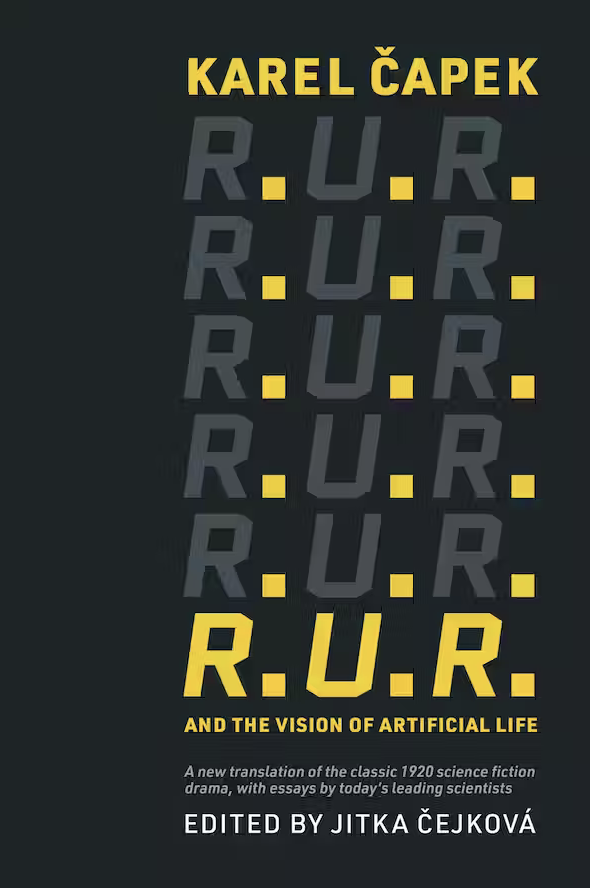Alife News
The Artificial Life Community Newsletter

A word from the team
Welcome to the 15th issue of the Alife Newsletter! Spring is soon coming to the northern hemisphere, so the theme for this newsletter is Growth - plant growth, robot healing, new opportunities with conferences, we got several interesting articles to end the 2023 academic year with a bang!
Talking about beginnings, one of our editors, Imy, has just started a new podcast, "What ALife!", which interviews members of the community. You can find more information here.
If you have any suggestions for future content, or would like to help us edit the newsletter, you can leave us a message in the feedback form. We specially appreciate messages from Master and PhD students who want to talk about their recent work. Send us a line! If you got something to share that other Alifers would be interested in, we want to know about it!
Lana, Imy, Mitsuyoshi, Claus and Gabriel
- Featured Paper: Artificial "Power Plants"
- Book Review: Complexity Explorer: The Study of Emergence
- Paper Review: Artificial Life: Discipline or Method? Report on a Debate Held at ECAL '99
- Solarpunk: Nature and Tech
- Book: "R.U.R. and the Vision of Artificial Life"
- Alife Job Offering:
- Upcoming Deadlines and Events
- About the Artificial Life Newsletter
Featured Paper: Artificial "Power Plants"
Spotted by Lana
I can't help it, I love projects that mix plants and robotics! How could I resist this recent paper about fake leaves that produce real energy? The leaves are "multi-source energy harvesters": they produce electricity from both windpower and falling rain.

Click here to see a LED array powered by the fall of one drop of water. Is it practical? Will it ever be used in real life to inconspicuously power street lamps? Let's be honest, it is pretty rare for this type of device to end up mass produced. But every time that progress is made, we get closer to that reality.
Press: Scitechdaily
Paper Ref: Multisource Energy Harvester on Textile and Plants for Clean Energy Generation from Wind and Rainwater Droplets by Guanbo Min, Gaurav Khandelwal, Abhishek Singh Dahiya, Shashank Mishra, Wei Tang and Ravinder Dahiya, 2 January 2024, ACS Sustainable Chemistry & Engineering.
Book Review: Complexity Explorer: The Study of Emergence
Book by Henrik Jeldtoft Jensen, Imperial College London
Short review by Imy Khan
As someone who has no formal training or education in complexity science - instead, attempting to teach myself its principles and mathematical formalisms on-the-fly - I have always felt like my knowledge of it suffers from large holes, where people who have more of a formal background in this area would have no such issues. Many things in ALife can be fall under the study of complexity science - from cellular automata, swarm behaviours, social dynamics, neural networks - so it's safe to say that the study of complexity is a core theme in ALife research. If you are new to the field, you are bound to hear about someone referring to complexity (or "emergence") almost-immediately. Despite the fact that my own research necessitates the study of emergent properties (of social systems), I still feel like I had a lot of work to do to bring my working knowledge of it all up to a level where it didn't feel so mediocre.
Over the Christmas period last year, I decided to pick up a book that might help me do that. After some research, I stumbled across Complexity Science: The Study of Emergence, by Professor Henrik Jeldtoft Jensen at Imperial College London, where he heads up the Centre for Complexity Science.
Though I am only about 4 or 5 chapters in to this book so far, I believe it is worthy of a recommendation to a broader audience. Prof. Jensen does an excellent job of holding your hand right from the very beginning, stripping away all of the complexity (pardon the pun), helping the reader understand the underlying principles of complex systems, why we want to study them, and how to think about "emergence". All of this is done assuming minimal background in math to start with: the formalisms get layered on over time. But by the time you get to that point, you should have (or, indeed, the book aims to provide you with) a good enough understanding of the underlying principles that, no matter what your level of understanding of math might be, you would be able to follow along.
There are many things I enjoy about this textbook. Many books claim to be "introductory" textbooks, but, in my opinion, this one really is. The writing style is accessible without being patronising, removed of unnecessary jargon, reducing the barrier of entry for anyone who might want to learn more about these topics. Each chapter also ends with some "homework" material, providing an additional pedadogical aspect that you can work through yourself, or even use for students that you might be teaching. What I really enjoy about this book is that it doesn't just lock itself in to a specific discipline. When it discusses the study of "emergence", it considers these phenomena across all different scales and different disciplines. That means, regardless of your background, you are sure to find examples of complexity or emergence that feel intuitive to you. Overall, I highly recommend this book to anyone who is interested in learning about complexity science, and its underlying principles and formalisms, right from the beginning, or anyone who is teaching students who might be interested in these topics!
Paper Review: Artificial Life: Discipline or Method? Report on a Debate Held at ECAL '99
By Imy Khan
What value does Artificial Life - with its decades-rich history of research, diverse range of methods, and ever-growing focus and interest - bring to the scientific community at large? How does it advance our knowledge? Should we think about Artificial Life as its own discipline, that tries to identify and understand new problems, or give us new ways of thinking? Do we instead just see the methods that we use as a means of enquiry to existing problems? Or, perhaps, is "artificial life" just an excuse to be creative and wacky, all in the name of "scientific advancement"?
There is no easy answer to these questions, of course. That is why, at ECAL '99, a debate was held with some of the field's most promiment researchers, over these very questions.
Jason Noble, Seth Bullock and Ezequiel Di Paolo presented a report on this debate, which took place 25 years ago, and is still as relevant a conversation today as it was then. For anyone who hasn't yet had an opportunity to read this short (3 page) report yet, or if you need a short refresher on how that debate unfolded, I encourage you to give it a read! You can find the paper here.
Who knows? Maybe it will make you change the way you view Artificial Life...
Solarpunk: Nature and Tech
Shared by Lana Sinapayen
You may have come in contact with the idea of Solarpunk, through scifi books or video games, maybe even wihout realizing it! Solarpunk envisions a future beyond capitalism, where humans use tech to live without overexploiting nature. In this series of talks shared by the Solarpunk Now! podcast, panelists from the Solarpunk Conference share their visions of exiting capitalism and bringing solarpunk to the real world.
"From Capitalist Realism to a Solarpunk Reality: Building the Infrastructures of a Better Future"
Book: "R.U.R. and the Vision of Artificial Life"
Shared by Lana
Did you know that the word "robot" is more than 100 years old? This book, an effort spearheaded by Jitka Čejková, presents a new English translation by translation by Štěpán Šimek of the Czech play "R.U.R: Rossum's Universal Robots" where Karel Čapek first coined the word. The play comes with 20 related essays by members of the ALife community.
Blurb:
"Čapek's robots were autonomous beings, but biological, not mechanical, made of chemically synthesized soft matter resembling living tissue, like the synthetic humans in Blade Runner, Westworld, or Ex Machina. The contributors to the collection—scientists and other scholars—explore the legacy of the play and its connections to the current state of research in artificial life, or ALife. Throughout the book, it is impossible to ignore Čapek's prescience, as his century-old science fiction play raises contemporary questions with respect to robotics, synthetic biology, technology, artificial life, and artificial intelligence, anticipating many of the formidable challenges we face today."
Get your copy now! MIT Press Amazon

Alife Job Offering:
Kai Olav Ellefsen, from the university of Olso, shares the following job offer:
Postdoctoral researcher position in Biologically Inspired Artificial Intelligence for Adaptive and Efficient Robots at the University of Oslo
The position is funded through DSTrain - a 5-year postdoctoral programme that will award 36 postdoctoral fellowship positions of 36 months each in two calls over the programme period within the overarching frame of data science. The programme will train researchers and innovators with disciplinary, interdisciplinary and transferable skills and a foundation in data science methods enabling them to become Europe’s digital leaders across disciplines and sectors.
Salary range: 50.000 - 57.000 EUR depending on qualifications
Links:
Seth Bullock, from the Department of Computer Science at the University of Bristol, shares the following job offer:
"If you're into Intelligent Agents, Machine Learning, Collective Intelligence, and closing the AI Gap, check out our new UKRI National AI Research Hub - postdocs, PhDs, and collaborative research fundings all available soon..."
Links:
Upcoming Deadlines and Events
By Claus,
Check out the upcoming submission deadlines for these ALife related conferences:
- ALIFE 2024. The tentpole conference for the Artificial Life community. Submission deadline: April 3rd. Conference dates: July 22-26th.
- IVA 2024: The ACM International Conference on Intelligent Virtual Agents focus on agents that have the ability to socially interact. Abstract submission: March 28th; Paper submission: April 5th; Conference days: September 16-19th.
- ACII 2024: International Conference on Affective Computing and Intelligent Interaction. Collocated with IVA above, this is a forum for research on affective and multimodal human-machine interaction and systems. Paper Submission: March 15th; Conference days: September 16-18th.
Besides the above conferences, also consider attending the Special Session on Artificial Life at IEEE-WCCI, to take place in Yokohama, Japan, from June 30th to July 5th.
Finally, the International Society on Artificial Life (ISAL) is asking for nominations for the 2024 ISAL awards. Make your voice heard about outstanding publications in 2023, outstanding early career scientists, and awards for service, education and outreach, among others. Learn more about it here.
About the Artificial Life Newsletter
The Alife Newsletter is a bi-monthly publication that aims to bring interesting news to the Artificial Life community.
The current editors of the newsletter are: - Lana Sinapayen - Imy Khan - Mitsuyoshi Yamazaki - Claus Aranha - Gabriel Severino
The newsletter is sent by e-mail and can also be acessed by RSS. You can subscribe here or follow the RSS feed here.
If you have any suggestions for future content, or would like to help us edit the newsletter, you can leave us a message in the feedback form. We specially appreciate messages from Master and PhD students who want to talk about their recent work. Send us a line!